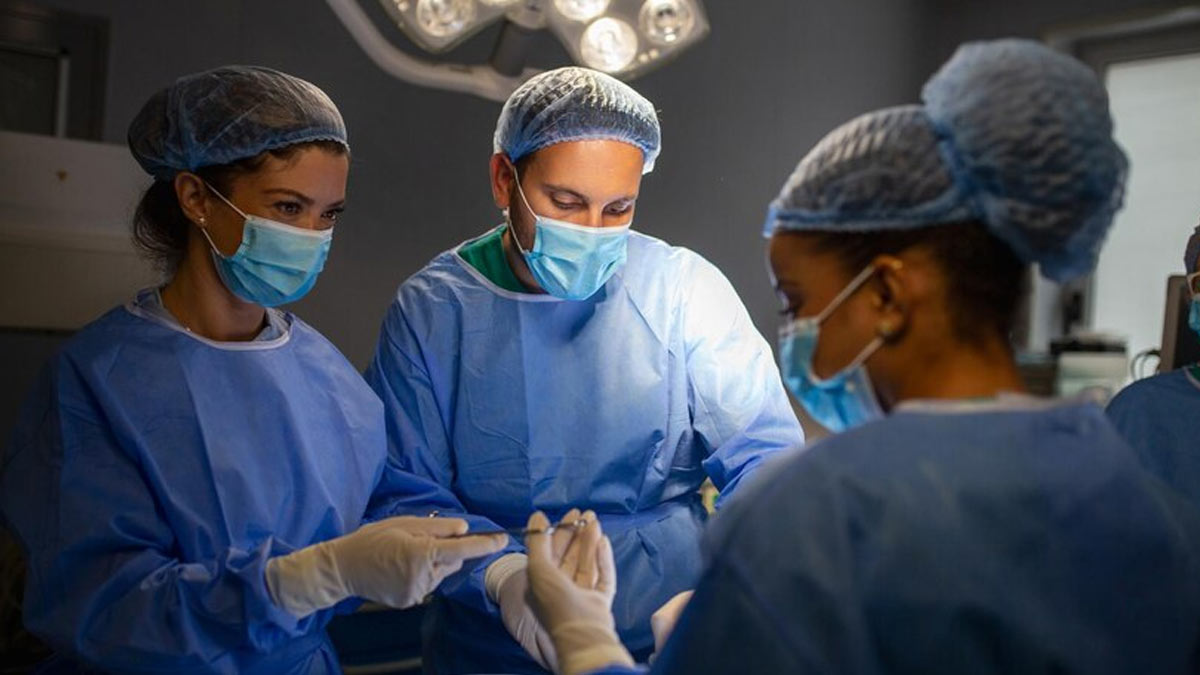
Doctors at Delhi’s BLK-Max Hospital successfully reattached the severed palm of 20-year-old Nikita Kumar following a devastating accident. After her hand was accidentally amputated by a foam-cutting machine, Nikita’s life took a dramatic turn as she was rushed to the hospital within the critical first 30 minutes. Thanks to the quick response from her family and the skilled team of surgeons, her hand was not only saved but is now on the path to full recovery, showcasing the incredible advancements in modern surgical techniques.
Table of Content:-
The Accident and Emergency Response
Nikita’s nightmare began when she accidentally placed her hand in a foam-cutting machine while delivering lunch to her brothers at their factory. This tragic incident led to the amputation of all her fingers at the mid-palm level. She was immediately rushed to the emergency room at the Hospital, arriving within 30 minutes, a critical time frame that made all the difference in her treatment.
At the hospital, a specialised team of plastic surgeons led by Dr Lokesh Kumar, Principal Director & Head of the Department of Plastic & Cosmetic Surgery, quickly took charge. Their first priority was to stop the bleeding and properly preserve the severed parts of her hand. Preserving the amputated palm in good condition is essential for a successful reattachment surgery.
Also read: One-Year-Old Baby Boy Recovers From Severe Multi-Organ Infection
The 12-Hour Surgery: How Reattachment Works

Reattaching a severed palm is an incredibly complex procedure that requires a high level of skill. The surgery, which lasted 12 hours, involved reconnecting blood vessels, nerves, tendons, and bones. Each of these elements plays a critical role in making the hand functional again:
Blood Vessels: Reconnecting the arteries and veins ensures that blood can flow back into the reattached palm, keeping the tissues alive.
Nerves: Reconnecting the nerves is essential for sensation and movement. Without proper nerve connections, the hand would be unable to feel or move.
Tendons and Muscles: These are responsible for movement, allowing the fingers to bend and grip.
Studies show that the success of such reattachment surgeries depends heavily on how quickly the patient receives medical care. Studies say that the "golden hour"—the first hour after an injury—is the most critical time for treatment to prevent long-term damage. Nikita’s arrival at the hospital within 30 minutes greatly increased the chances of a successful outcome.

Recovery and Rehabilitation
After the surgery, Nikita began an intensive rehabilitation program aimed at restoring movement and sensation to her hand. Dr Avtar Singh Bath, Senior Director of Plastic & Cosmetic Surgery at BLK-Max Hospital, explained that Nikita is already beginning to feel sensations in her fingers, which is a good sign that the nerves are regenerating.
Rehabilitation is a key part of the recovery process. It involves exercises and physical therapy designed to improve the strength, dexterity, and range of motion in her hand. Studies have shown that with consistent therapy, many patients regain a significant amount of functionality in their reattached limbs.
In the future, Nikita is expected to regain much of the use of her hand, thanks to the dedicated care she is receiving. Her story serves as an inspiration and a reminder of the importance of both immediate action and expert medical care in saving lives and limbs.
Also watch this video
How we keep this article up to date:
We work with experts and keep a close eye on the latest in health and wellness. Whenever there is a new research or helpful information, we update our articles with accurate and useful advice.
Current Version